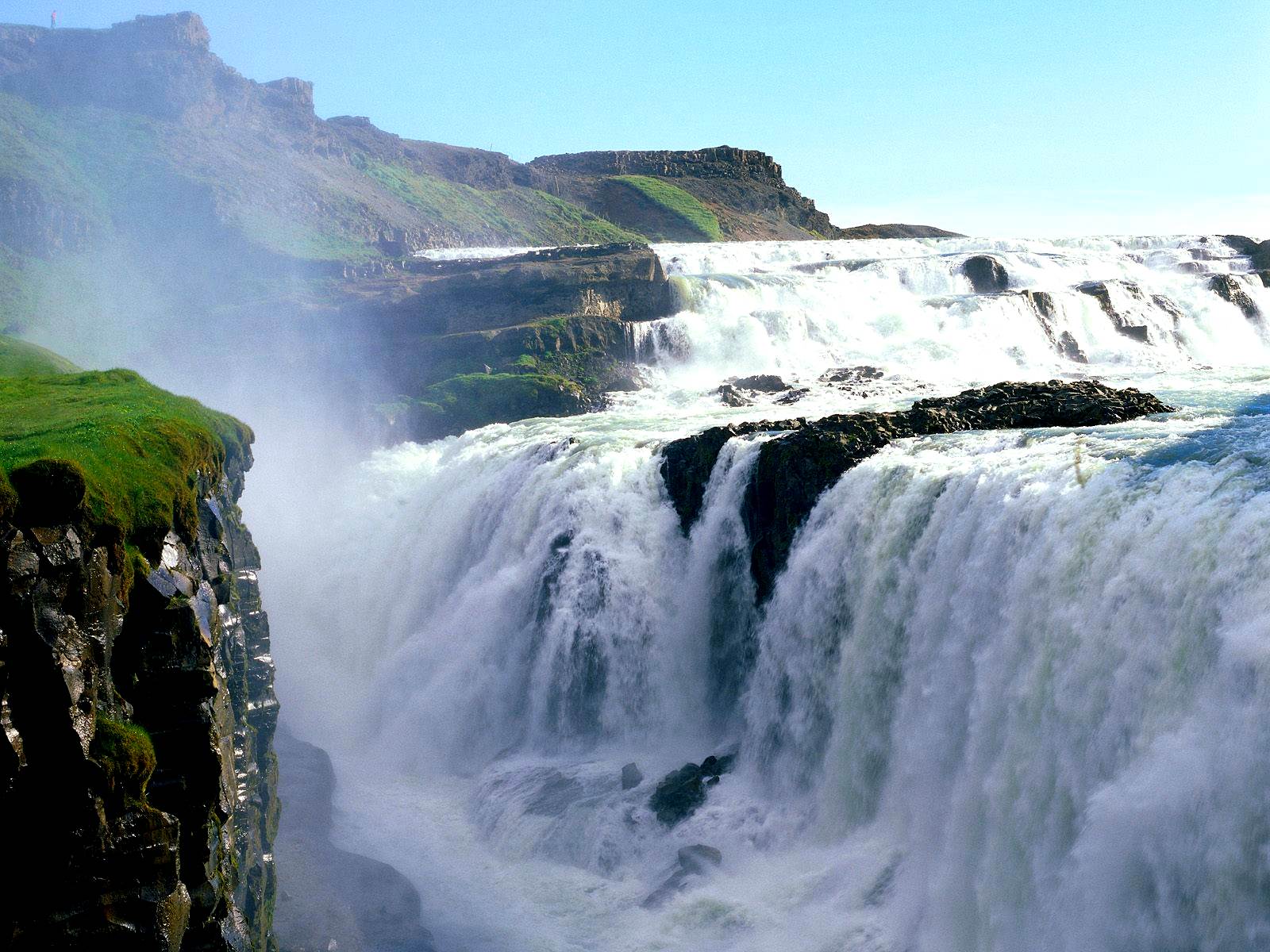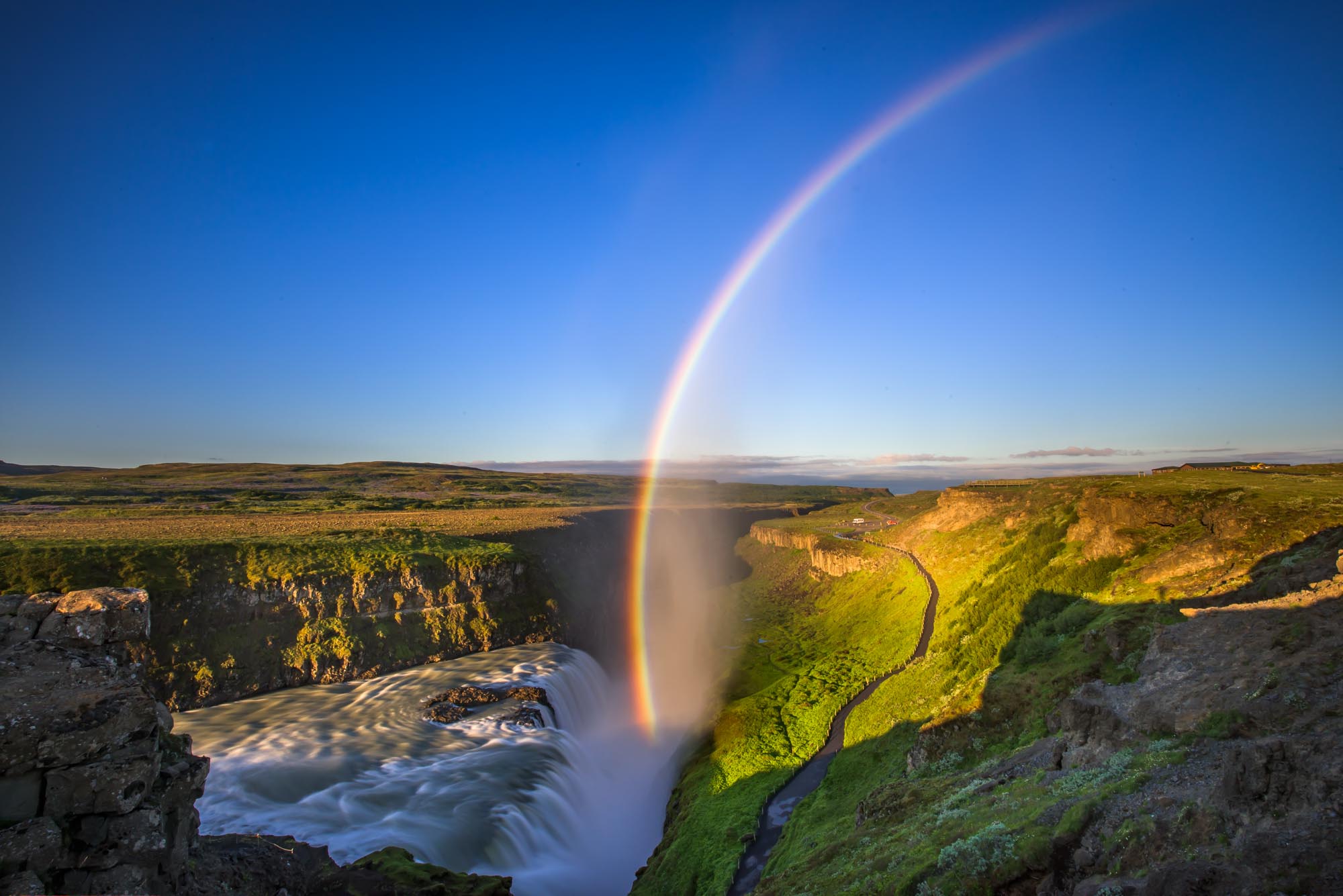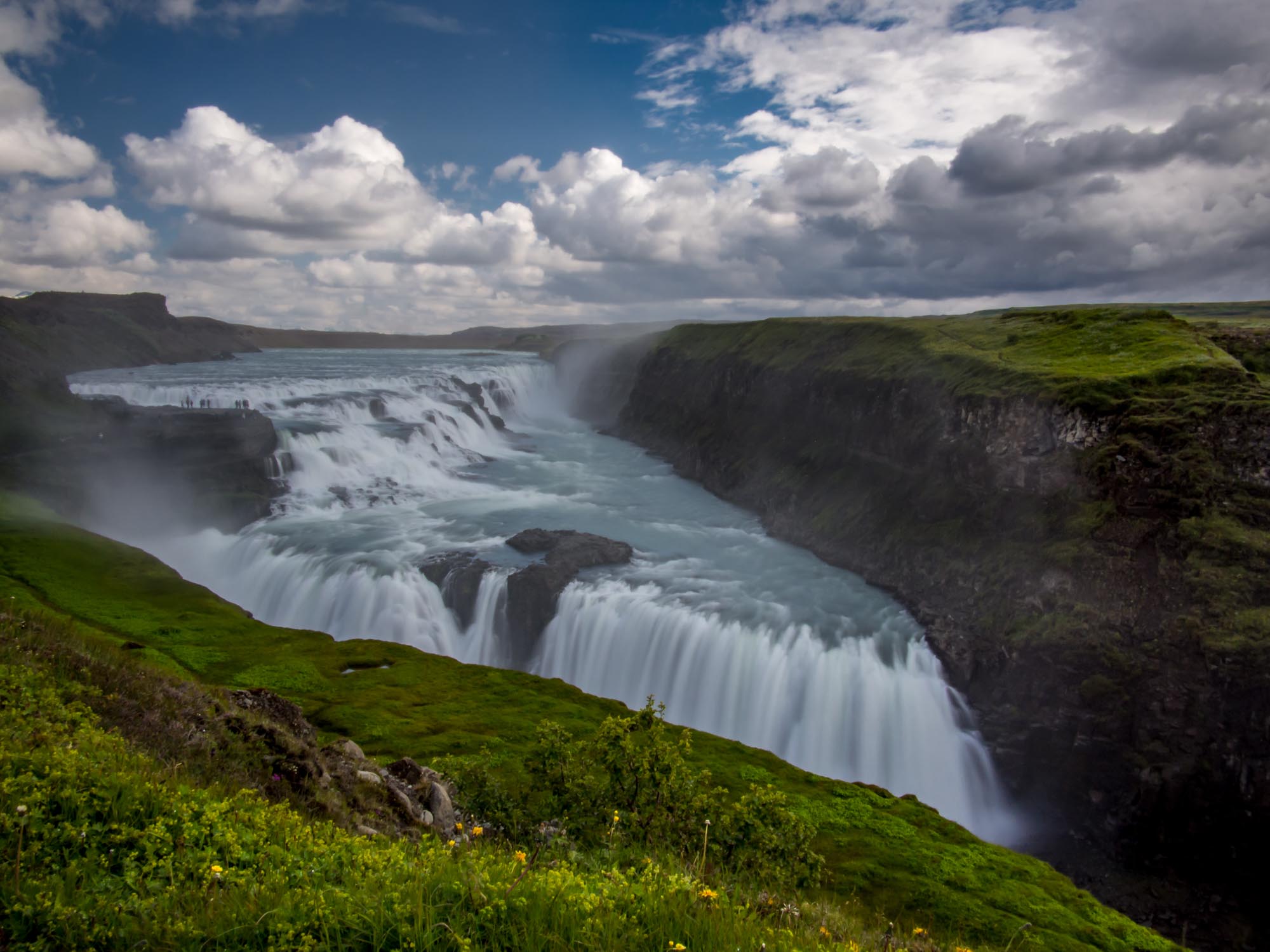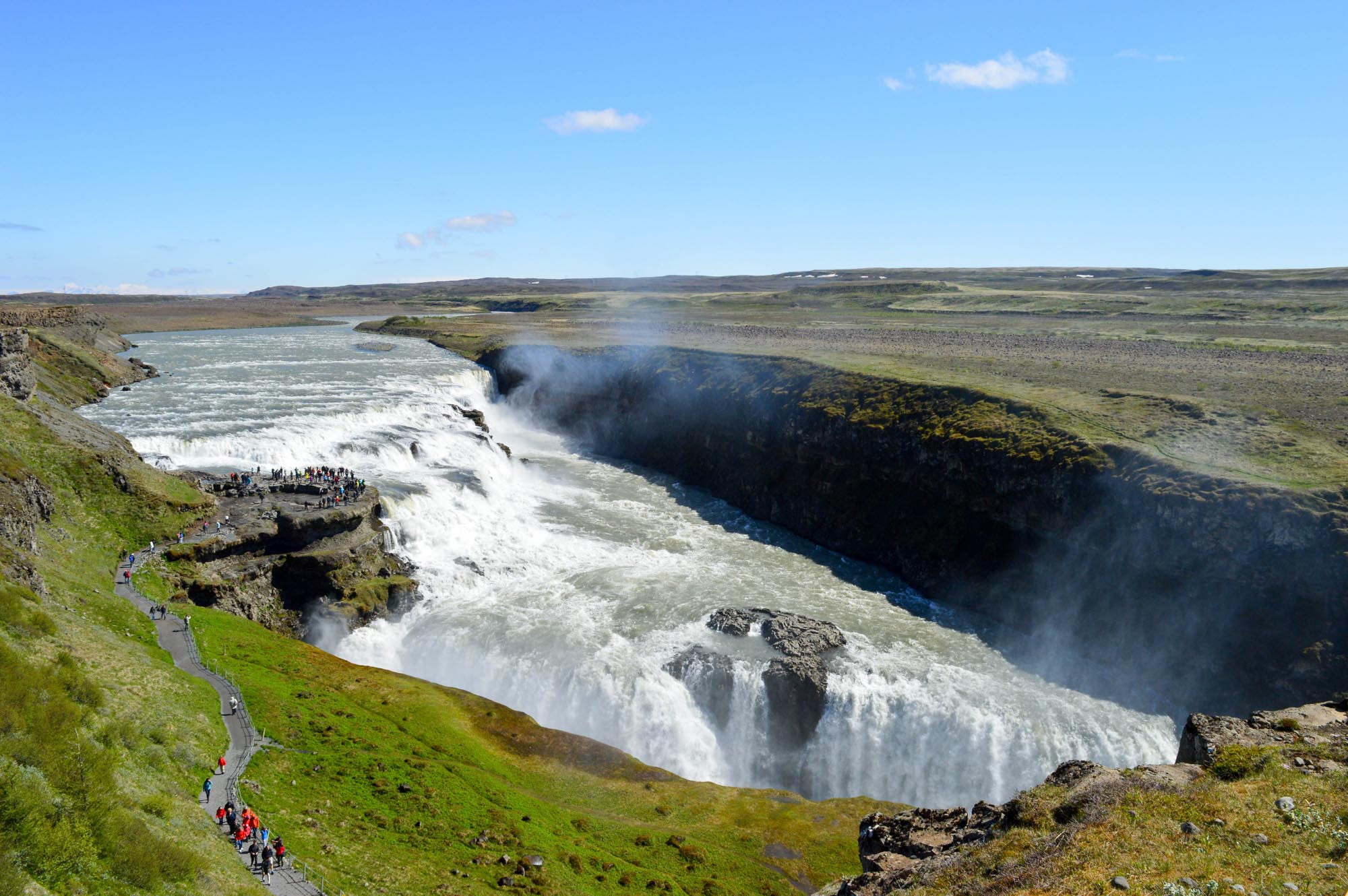Gullfoss Waterfall
Gullfoss Waterfall
Iceland is well known for its spectacular waterfalls of all shapes and sizes. It is impossible to say which is the most beautiful though many will argue it should be Gullfoss.
It is best to visit early in the morning or in the evening to avoid the crowds at this very popular site.
The glacial river Hvita flows from Hvitarvatn, a glacial outlet lake from the Langjokull glacier.
The Hvita thunders over the two-tiered falls, with a combined drop of 33m, and then disappears into a misty 70m deep gorge. Quite often a rainbow can be seen in the mist which may account for its name ‘Golden Falls’.
In winter it can be so cold that the water partially freezes, providing interesting subjects for photography. The lower parking area gives access to the path to the edge of the waterfall.
At the upper parking area, there is a privately run Information Centre, souvenir shop and cafe serving soup, sandwiches, and cakes. The two car parks are joined by a boardwalk and steps.
From the lower car park, take the gravel path down to the waterfall. It is an easy walk but often wet when the wind blows the spray (pack a waterproof).
The path ends at the rocks by the top tier of the waterfall. It’s worth pausing to enjoy the spectacular view down the gorge. The rocks can be slippery so care is needed. In winter, this path is often closed for visitor safety.
In the car park is a memorial to Sigridur Tomasdottir who lived at a nearby farm. At the end of the 19th century, foreign investors were interested in harnessing the power of Icelandic waterfalls to produce electricity.
Sigridur fought very hard against some of the country’s most powerful men to save Gullfoss; her efforts paid off and the waterfall is now protected. She died in 1957.
From the upper viewing level, you can look down on the falls from above. It is worth continuing to the second viewpoint, where you can look back down the gorge.
In clear weather, the view over Langjokull, Iceland´s second largest glacier at 950km² in size, is spectacular. Its highest peak reaches 1,355m and frames the black mountains in front of it named Jarlshettur (Earl´s hoods), a hyaloclastite ridge, formed in a sub-glacial eruption during the Ice Age.





